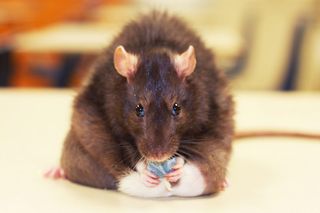Why Some Animals Are Fatter Than Others

Humans are often obsessed with their weight, but nature seems to know exactly how fat each animal on the planet should be. The perfect weight depends on how each species solves the problem of avoiding both starving to death and being killed by predators, new research suggests.
The study, published in The American Naturalist, explains how these causes of death often exert opposite pressures on animals. Storing a lot of fat, for example, helps animals survive periods without food but also slows their running speeds and so makes getting caught by a predator more likely.
Animals can be stronger to compensate, but the energetic costs of extra muscle mean that the animal would starve more quickly during a food shortage.
NEWS: Animals Getting Fatter Too
Andrew Higginson of Bristol University's School of Biological Sciences led the study, which used mathematical models to explore how much muscle and fat animals should have in their body to give themselves the best chances of survival.
An important consideration was how much carrying fat increases the energetic costs of movement. The models revealed that the size of this cost influenced whether larger animals should have more fat than smaller animals, or vice versa.
"Our results explain differences between different families of mammal. For example, larger bats carry proportionally less fat than small bats but larger carnivores carry more fat than small carnivores. Among rodents, it's the medium-sized species that carry around the most fat!" Higginson said in a press release.
Sign up for the Live Science daily newsletter now
Get the world’s most fascinating discoveries delivered straight to your inbox.
NEWS: Got 'Fat Genes'? You Can Still Lose Weight
"These differences agree with the models predictions if you consider the costs of carrying fat for these three groups," he added. "Bats fly and so have high costs of carrying extra weight, whilst carnivores spend much of their time resting and so will use less energy than busy scurrying rodents."
The study also shows that much of the variation between animals in their amounts of fat and muscle can be explained by differences between the sexes, how much animals have to fight to get food, and the climate in which they live.
This article was provided by Discovery News.
